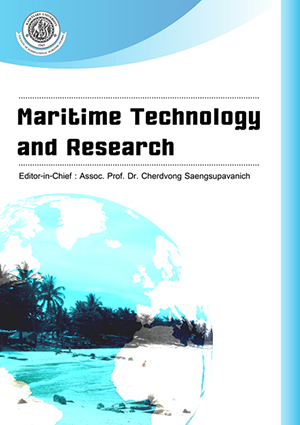ThaiScience
ThaiScience
MARITIME TECHNOLOGY AND RESEARCH
Volume 5, No. 01, Month JANUARY, Year 2023, Pages 257 - 541
Behavior response, growth, and structure of the eye retinal layer in juvenile seabass, lates calcarifer light-induced changes
Sadanun Kaewpranee, Jes Kettratad, Kitipong Angsujinda, Sinlapachai Senarat, Natthawut Charoenphon, Francis Gerald Plumley, Ibrahim Sayoh, Gen Kaneko
Abstract Download PDF
Light is a key environmental factor that is strongly related to fish activity and behavior. Exposure to certain wavelengths is known to affect growth performance and survival of teleost larvae and juveniles. Our study aimed to determine the effects of exposure to three light sources [red (710 nm), blue (453 nm) and green (510 nm)] on growth performance, behavioral response, visibility (time to eat, in minutes), and the structure of the retinal layer in juvenile [approx. 4.3 cm in total length (N = 30)] seabass (Lates calcarifer). Fish were acclimated to the three light conditions for four weeks prior to data collection. Behavioral responses, including schooling organization, swimming speed, time to consume prey, and feeding response, were all improved in juveniles reared under red light (710 nm). Preliminary histological observations revealed that fish from the red-light environment have the thickest retina layers and the highest density of photoreceptors. Our data suggest that red light is useful in the aquaculture of juvenile L. calcarifer.
Keywords
Aquaculture, Red light, Photoreceptor cell, Seabass, WavelengthsMARITIME TECHNOLOGY AND RESEARCH
Published by : Faculty of International Maritime Studies, Kasetsart University
Contributions welcome at : https://www.tci-thaijo.org/index.php/MTR
